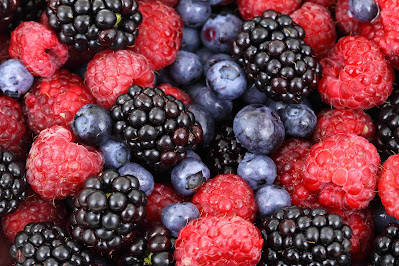Here are 20 fruits known for their anti-inflammatory properties:
Berries: Blueberries, strawberries, raspberries, and blackberries are rich in antioxidants and have potent anti-inflammatory effects.
Cherries: Tart cherries, in particular, contain anthocyanins, which have strong anti-inflammatory properties.
Pineapple: Contains bromelain, an enzyme with anti-inflammatory and digestive benefits.
Oranges: Rich in vitamin C and other antioxidants that help reduce inflammation.
Kiwi: Packed with vitamin C, vitamin E, and other antioxidants that combat inflammation.
Papaya: Contains papain, an enzyme with anti-inflammatory properties.
Avocado: Rich in healthy fats and antioxidants, such as carotenoids and tocopherols, which have anti-inflammatory effects.
Watermelon: Contains lycopene and other antioxidants that help reduce inflammation.
Grapes: Red grapes, in particular, contain resveratrol, a compound with anti-inflammatory and antioxidant properties.
Pomegranate: Contains punicalagins and other antioxidants that have anti-inflammatory benefits.
Apples: Rich in quercetin and other antioxidants known for their anti-inflammatory effects.
Tomatoes: Contains lycopene and other antioxidants that help reduce inflammation.
Mango: Contains compounds like mangiferin, which possess anti-inflammatory properties.
Guava: Packed with vitamin C and other antioxidants that combat inflammation.
Lemons: High in vitamin C and antioxidants, which contribute to their anti-inflammatory effects.
Peaches: Contain phenolic compounds and antioxidants that have anti-inflammatory benefits.
Grapefruit: Rich in vitamin C and other antioxidants that help reduce inflammation.
Cranberries: Contain anthocyanins and other antioxidants with anti-inflammatory properties.
Plums: Rich in antioxidants and fiber, which contribute to their anti-inflammatory effects.
Blackcurrants: Packed with anthocyanins and other antioxidants that combat inflammation.
Incorporating a variety of these fruits into your diet can contribute to an anti-inflammatory eating pattern. Remember to choose whole fruits over processed or sugary fruit products for maximum health benefits.


